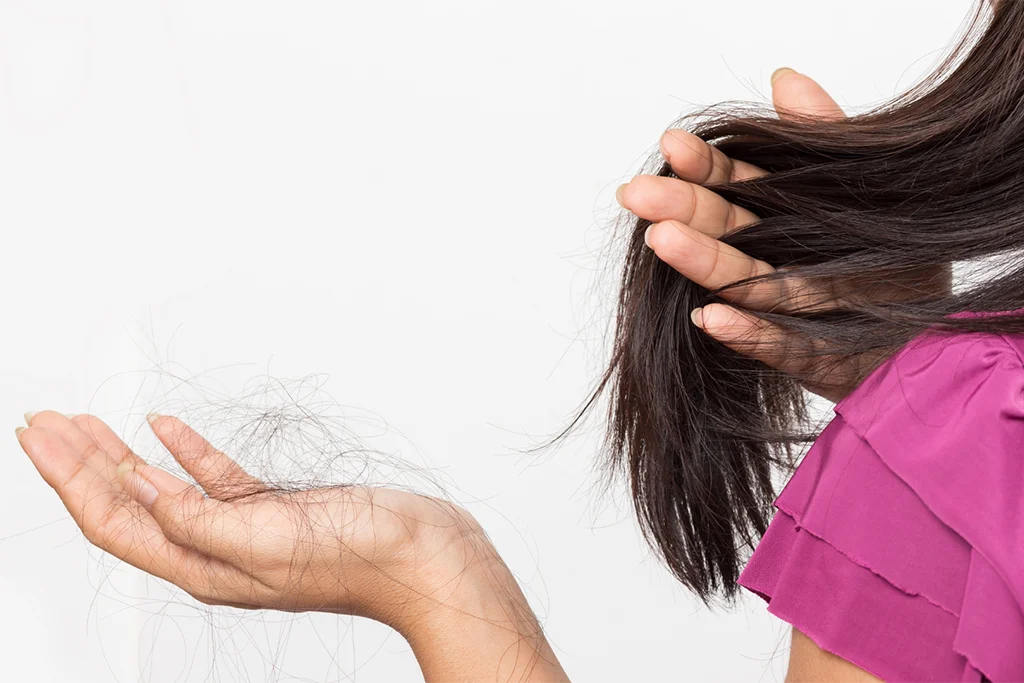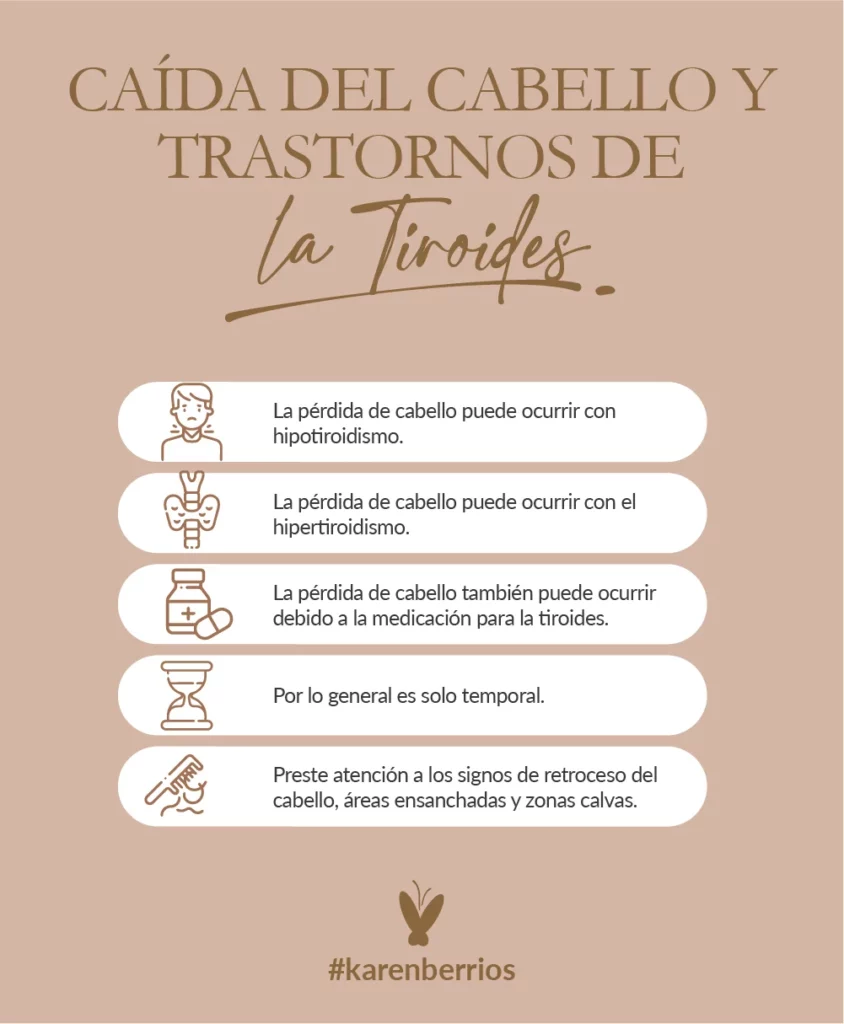

Hair Loss and Thyroid Disorders
Thyroid disorders and diseases are connected to a large variety of symptoms that can range from changes in weight and energy levels to skin dryness and hair loss. And not everyone is affected the same or experiences the same symptoms.
The thyroid gland and its connection to the pituitary gland and hypothalamus are the masters of our hormones, directing their activation and release,as well as preventing them from being produced in the first place. So, when a disorder occurs, many of these hormones either get overproduced or underproduced, causing an imbalance in all of the other systems in your body.
Let’s Talk About Hair
Everyone has hair; even animals. Physiologically, hair has a plethora of functions, like protecting against the cold weather and external factors, regulating body temperature, producing sebum and apocrine sweat, as well as being an amazing resource for stem cells.
And according to a study done by the John Hopkins School of Medicine, hair even extends our sense of touch, sending information directly to the brain. David Ginty, Ph.D., professor of neuroscience at Johns Hopkins, says that there are “more than 20 classes of mechanosensory nerve cells in the skin that detect everything from temperature to pain.”
Hair structure consists of two main parts: the hair shaft and the hair follicle, which are both divided into three regions.
The hair follicle is a unique part of the human body because it acts as a sort of “mini-organ,” as it has continuous growth and rest sequence called the hair cycle. This hair cycle is regulated and governed by many different factors, from your hormones and blood circulation to genes and nutritional habits. When this continuous growth cycle is impaired in some way, it causes hair to stop growing, and in many cases for good.
Hair Loss
According to the American Academy of Dermatology (AAD), a normal and healthy hair cycle causes us to lose 50-100 hairs on a daily basis. Some people lose more and some people lose less, but even if it seems like it’s significantly more than 100 hairs a day, in most cases it’s still not considered hair loss, but hair shedding, which happens often but stops pretty quickly.
Hair loss, on the other hand, is also called alopecia, and it’s a condition that is affecting more and more people today, especially men. It can affect any part of your body and it can develop gradually over years or happen abruptly. Depending on the cause and a myriad of other factors, it can be temporary or permanent.
Symptoms of Hair Loss
It’s important to pay attention to the symptoms so you can approach your condition as early as possible and potentially stop it in its tracks and try to reverse it. Some of the most common symptoms include:
- Receding hairline and a specific part that’s becoming wider than before
- Plenty of loose hair on the hairbrush, significantly more than before
- Bald patches that can grow over time
- Pain and itching on your scalp (these can also be signs of a fungus called seborrhea that can potentially lead to hair loss)
Main Types of Alopecia
Depending on the root causes behind it, there are several types of alopecia:
- Androgenetic alopecia – the most common type with a hereditary, genetic root cause
- Alopecia areata – is caused by an autoimmune disease that attacks the hair follicles
- Anagen effluvium – is usually caused by radiation treatment or chemotherapy, with a large percentage of successful regrowth after the treatment has ended
- Telogen effluvium – sudden and rapid hair loss caused by emotional or physical shock, stress, trauma, hormonal changes, or medication (such as thyroid medication)
- Tinea capitis – caused by a fungal infection
- Traction alopecia – caused by constant pressure on the hair, such as often wearing your hair in tight hairstyles like buns, braids, and ponytails

Other Causes of Hair Loss
In addition to these most common types of alopecia, there are other factors that cause hair loss, such as:
- Aging – most people notice some hair loss with age because the hair cycle slows down and starts losing color and turning into gray (or white)
- Overuse of toxic hair products with heavy chemicals
- Scalp psoriasis
- Trichotillomania – a mental health disorder that involves recurrent and irresistible urges to pull your hair
- Sexually transmitted infections – syphilis is known to create patchy hair loss all over the body
- Deficiency in certain micronutrients such as biotin, iron, zinc
- Protein deficiency
- Poisoning
- Thyroid disease
Hair Loss and Thyroid Disease
Both, hyperthyroidism (when you have an overactive thyroid that produces more hormones than your body needs) and hypothyroidism (when you have an underactive thyroid that produces less hormones than you need) cause dry and brittle hair, as well as thinning and hair loss all over your body.
Thyroid hormones affect your blood flow and hair regrowth cycle which can both be disrupted with thyroid dysfunction. According to Alexander Lightstone Borsand, MD, ABLM, board-certified lifestyle medicine physician in Scottsdale, Arizona, the most common and persistent symptom of Hashimoto’s thyroiditis (autoimmune thyroid disease) is hair loss. And especially in thyroid disorders that are left untreated.
The problem with thyroid disease, whether it’s due to an overactive or underactive thyroid gland, is that it takes a while to notice, follow the symptoms, and actually get the right treatment.
However, the thinning and loss of your hair due to thyroid disorders happens gradually and slowly, usually making you notice the symptoms before it’s too late. In most cases, hair loss caused by hyper or hypothyroidism is only temporary and can be reversed with the right treatment.
In addition to medications, there are some home remedies you can try out to boost your hair growth. These include:
- Taking iron – one of the most common symptoms of iron deficiency is hair loss
- Keeping up with your other micronutrient supplements as well
- Eating a nutritious diet filled with whole foods and superfoods
- Herbal supplements such as palmetto, black cohosh, anf chasteberry
- Essential oils such as peppermint essential oil
- Excessive iodine intake
- Abstain from constant pressure on your hair caused by lifted hairstyles
Another possible cause of thyroid-related hair loss is thyroid medication, but that’s usually reversed as soon as you stop taking the said medication.
Final Thoughts
Thyroid disorders cause an imbalance in the entire body, from hormone production and body temperature regulation to digestion and the immune system. It doesn’t come as a surprise then, that hair loss is one of the most common symptoms.
If alopecia can simply occur due to a stressful situation or because you’re keeping your hair in a ponytail too much, a disorder of your entire endocrine system definitely seems like a viable cause for it to happen.
The problem with it is that usually, before we notice that something is wrong with our thyroid function, the symptoms have gone a bit too far, having us take medication or perform surgical procedures to heal. Pay attention to your eating and lifestyle habits, check often for vitamin and mineral deficiencies, and treat your hair gently.

hey there
I'm Karen!
I have found my cancer journey to be a positive and profound transformational experience. I’m inspired to share my healing journey here, and trust you’ll find hope, encouragement and purpose as you discover the healing power that lies within you.
Join
The Mailing List!
By signing up for my newsletter, you agree with our Privacy Policy and Terms & Conditions.


